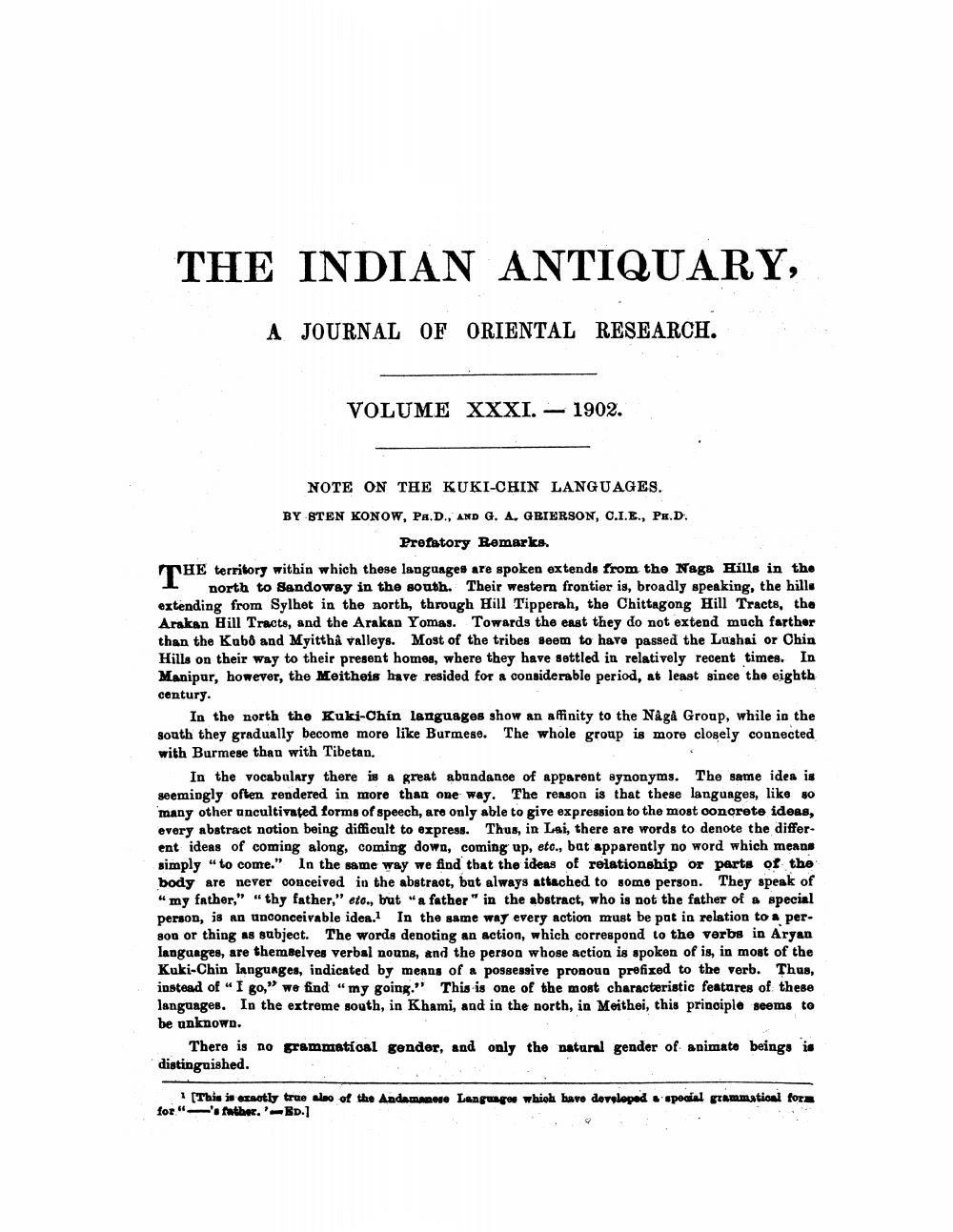Book Title: Indian Antiquary Vol 31 Author(s): Richard Carnac Temple Publisher: Swati Publications View full book textPage 5
________________ THE INDIAN ANTIQUARY, A JOURNAL OF ORIENTAL RESEARCH. VOLUME XXXI. - 1902. NOTE ON THE KUKI-CHIN LANGUAGES. BY STEN KONOW, PA.D., AND G. A. GRIERSON, C.I.E., PH.D. Prefatory Bemarks. THE territory within which these languages are spoken extends from the Naga Hills in the 1 north to Sandoway in the south. Their western frontier is, broadly speaking, the hills extending from Sylhet in the north, through Hill Tipperah, the Chittagong Hill Tracts, the Arakan Hill Tracts, and the Arakan Yomas. Towards the east they do not extend much farther than the Kab8 and Myitthå valleys. Most of the tribes seem to have passed the Lushai or Chin Hills on their way to their present homes, where they have settled in relatively recent times. In Manipur, however, the Meitheis have resided for a considerable period, at least since the eighth century. In the north the Kuki-Chin languages show an affinity to the Någå Group, while in the goath they gradually become more like Burmese. The whole group is more closely connected with Burmese than with Tibetan. In the vocabulary there is a great abundance of apparent synonyms. The same idea is seemingly often rendered in more than one way. The reason is that these languages, like 80 many other ancultivated forms of speech, are only able to give expression to the most ooncrete ideas, every abstract notion being difficult to express. Thus, in Lai, there are words to denote the differ. ent ideas of coming along, coming down, coming up, etc., bat apparently no word which means simply " to come." In the same way we find that the ideas of relationship or parts of the body are never conceived in the abstract, but always attached to some person. They speak of "my father," "thy father," eto., but a father" in the abstract, who is not the father of a special person, is an unconceivable idea. In the same way every action must be pat in relation to a person or thing as subject. The words denoting an action, which correspond to the verbs in Aryan languages, are themselves verbal nouns, and the person whose action is spoken of is, in most of the Kuki-Chin Languages, indicated by means of a possessive pronouo prefixed to the verb. Thus, instead of "I go," we find my going." This is one of the most characteristic featares of these languages. In the extreme south, in Khami, and in the north, in Meithei, this principle seems to be unknown. There is no grammatioal gender, and only the natural gender of animate beings is distinguished. (This is exactly true slao of the Andamanose Language which have developed a special grammation form for"- 's father, ' D.Page Navigation
1 ... 3 4 5 6 7 8 9 10 11 12 13 14 15 16 17 18 19 20 21 22 23 24 25 26 27 28 29 30 31 32 33 34 35 36 37 38 39 40 41 42 43 44 45 46 47 48 49 50 51 52 ... 556
